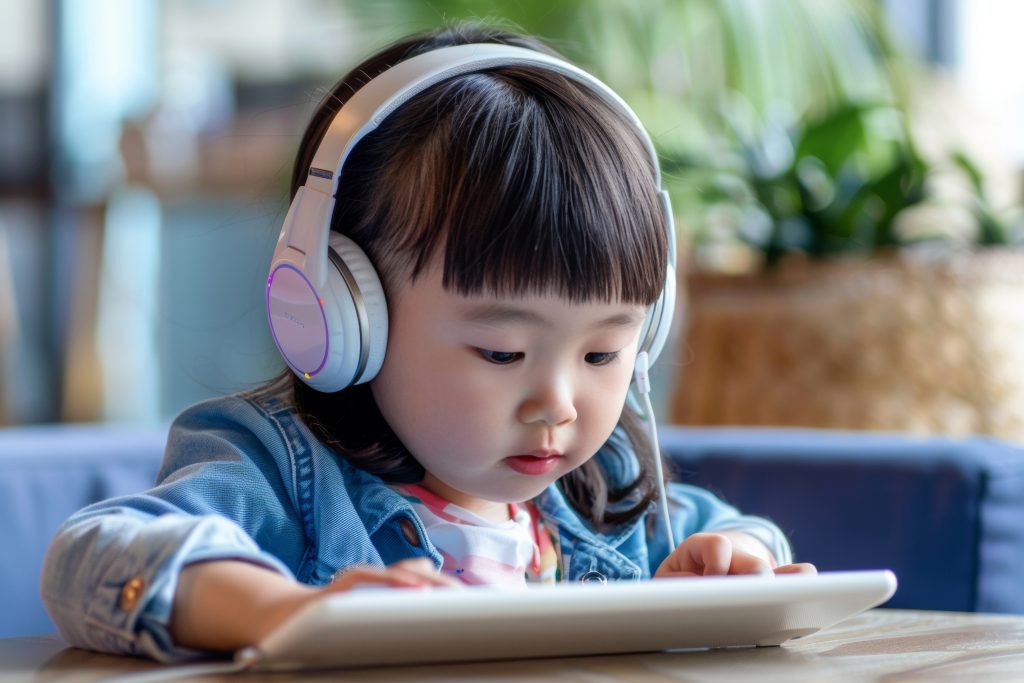
In early childhood education, play is a fundamental way for children to learn and develop critical skills such as creativity, problem-solving, and social interaction. Play-based learning has long been recognized for its ability to foster cognitive, emotional, and physical growth. As technology becomes an increasingly integral part of daily life, educators are finding new ways to incorporate it into play-based learning environments. When used thoughtfully, technology can enhance creativity, engagement, and exploration, adding a new dimension to traditional play-based activities.
In this blog, we’ll explore how technology can complement and enhance play-based learning in daycare and preschool settings. We’ll also discuss how daycare management tools, such as WizHippo, can support teachers and caregivers in organizing and tracking these activities to ensure they align with educational goals.
The Role of Play-Based Learning in Early Childhood Education
Before diving into how technology can support play-based learning, it’s important to understand the fundamental principles of this approach. Play-based learning allows children to explore, experiment, and interact with their environment in a natural and engaging way. This form of learning is child-centered and encourages autonomy, creativity, and collaboration.
Play-based learning often involves:
- Exploratory Play: Children are encouraged to explore their surroundings, materials, and ideas without specific instructions. This fosters curiosity and problem-solving.
- Imaginative Play: Role-playing, storytelling, and make-believe allow children to express their creativity and develop social skills by interacting with others.
- Physical Play: Activities such as running, jumping, or playing with building blocks help children develop gross and fine motor skills, as well as spatial awareness.
- Collaborative Play: Group play encourages teamwork, communication, and emotional regulation as children learn to share, negotiate, and resolve conflicts with peers.
How Technology Can Enhance Play-Based Learning
While play-based learning has traditionally been rooted in physical, hands-on experiences, technology can serve as a powerful complement to these activities. When integrated thoughtfully, digital tools can enhance play by offering new ways for children to explore, create, and learn. Here are some ways technology can support play-based learning:
1. Interactive Learning Tools
Interactive apps and educational games can offer children a fun and engaging way to explore concepts such as math, language, and science through play. These digital tools often use colorful graphics, sound effects, and interactive elements to keep children engaged while reinforcing important skills.
- Example: Apps that allow children to build virtual structures, solve puzzles, or experiment with art tools help develop critical thinking, problem-solving, and creativity.
- Tip: Look for apps that align with the goals of play-based learning, focusing on open-ended exploration rather than structured tasks or quizzes.
2. Creative Expression Through Technology
Technology can offer children new opportunities for creative expression. Digital art tools, music-making apps, and storytelling platforms allow children to create their own artwork, compose music, or craft narratives, expanding the possibilities for imaginative play.
- Example: Children can use drawing tablets or apps to create digital art, mixing colors, drawing shapes, and experimenting with different textures. Similarly, apps that let children compose music or create animated stories can ignite their creativity.
- Tip: Encourage children to combine traditional materials with digital tools. For instance, they could draw a picture by hand and then use a tablet to add digital enhancements, merging the physical and digital worlds.
3. Collaborative Digital Play
Technology can also facilitate collaborative play by allowing children to work together on digital projects. Whether through shared virtual environments, group video games, or co-creating digital stories, technology can enhance social interaction and teamwork.
- Example: Platforms that allow multiple children to build and explore virtual worlds together foster collaboration, communication, and problem-solving, all within the context of play.
- Tip: Use digital tools that encourage cooperation rather than competition, emphasizing the importance of teamwork and shared achievements.
4. Augmented Reality (AR) and Virtual Reality (VR)
AR and VR technologies can bring new dimensions to play-based learning by immersing children in interactive experiences that blend the physical and digital worlds. AR apps can enhance physical play by overlaying digital elements onto the real world, while VR can transport children to entirely new environments, fostering exploration and imagination.
- Example: Children can use AR apps to bring their drawings to life, interact with virtual animals, or explore new landscapes from the classroom. VR can allow them to “visit” distant places or dive into interactive stories that promote learning through exploration.
- Tip: Ensure that AR and VR experiences are developmentally appropriate, providing age-appropriate content that aligns with the goals of play-based learning.
5. STEM Learning Through Play
Technology can be a valuable tool for introducing young children to basic STEM (science, technology, engineering, and math) concepts in a playful and hands-on way. Educational robots, coding games, and digital building tools can help children explore STEM topics while engaging in creative problem-solving.
- Example: Coding toys and apps, such as those that allow children to program simple robots, introduce foundational technology and engineering concepts in a way that feels like play rather than traditional learning.
- Tip: Pair digital STEM tools with physical activities, such as building structures with blocks or conducting simple experiments, to reinforce learning through hands-on exploration.
Integrating Technology into Play-Based Learning: Best Practices
While technology offers exciting opportunities for enhancing play-based learning, it’s important to integrate it thoughtfully. Here are some best practices for incorporating technology in a way that supports and complements play-based learning:
1. Balance Screen Time with Physical Play
While digital tools can enrich play-based learning, it’s important to strike a balance between screen-based activities and physical play. Children should have plenty of opportunities to engage with the physical world, using technology as a complement rather than a replacement for hands-on exploration.
- Tip: Use technology as one of many tools in the classroom, alternating between digital and non-digital activities. For example, children might use an art app after spending time creating physical crafts or switch between building with blocks and designing structures on a tablet.
2. Prioritize Open-Ended Play
Choose digital tools that support open-ended play, allowing children to explore and experiment without rigid instructions or predetermined outcomes. Open-ended tools encourage creativity and critical thinking, allowing children to take charge of their learning experience.
- Tip: Avoid apps that are too focused on structured tasks or quizzes. Instead, look for tools that allow children to create, explore, and solve problems in their own way.
3. Facilitate Collaborative Play
Use technology to promote collaboration and teamwork. Encourage children to work together on digital projects, share ideas, and support one another as they navigate virtual experiences.
- Tip: Pair children up to work on digital activities, fostering cooperation and communication. For instance, two children could work together to create a digital story or solve a puzzle in a shared app.
4. Incorporate Technology into Real-World Play
Blend digital and physical play by using technology to enhance real-world activities. For example, children could use a tablet to photograph their block structures, record their voices as they tell a story, or use AR apps to interact with objects in their environment.
- Tip: Encourage children to document their physical play using technology, such as taking pictures of their artwork or recording videos of their imaginative play, which can be shared with parents or revisited later.
5. Monitor and Reflect on Technology Use
It’s important to monitor how children are using technology and reflect on its impact on their learning. Regularly assess whether digital tools are enhancing play-based learning and adjust activities as needed.
- Tip: Encourage children to reflect on their digital experiences by asking open-ended questions, such as, “What did you learn while using the app?” or “How did you solve that problem?” This helps them think critically about their play.
How Daycare Management Software Can Support Play-Based Learning
Daycare management tools like WizHippo can play a key role in organizing and tracking play-based learning activities that incorporate technology. By using these systems, educators can plan, document, and assess learning experiences while keeping parents informed about their child’s progress.
Here’s how WizHippo can enhance play-based learning:
1. Activity Planning and Documentation
WizHippo allows educators to plan and document play-based learning activities, ensuring that each activity aligns with developmental goals. Teachers can record the types of play children engage in, the technology tools used, and the skills children are developing, providing a comprehensive picture of each child’s learning journey.
- Feature Highlight: Educators can track children’s engagement with both physical and digital play activities, helping to balance the use of technology in the classroom.
2. Progress Tracking and Reporting
Using WizHippo, teachers can track children’s progress in key developmental areas such as creativity, problem-solving, and social skills. This allows educators to assess how technology is supporting learning and identify areas where additional support may be needed.
- Feature Highlight: Progress reports can be generated and shared with parents, providing detailed insights into how their child is benefiting from both traditional and tech-enhanced play-based learning.
3. Parent Communication
WizHippo’s communication tools make it easy for teachers to share updates, photos, and reports with parents. This allows parents to see how their child is engaging with technology in the classroom and provides them with ideas for supporting play-based learning at home.
- Feature Highlight: Parents can access updates on their child’s digital and physical play activities through the WizHippo parent portal, helping them stay connected to their child’s learning.
Conclusion
Incorporating technology into play-based learning offers exciting opportunities for enhancing creativity, engagement, and exploration in early education. By using digital tools to complement traditional play activities, educators can provide children with new ways to express themselves, solve problems, and collaborate with peers.
Daycare management software like WizHippo can further support this integration by helping educators plan, track, and document play-based learning experiences that use technology. With the right balance of physical and digital play, educators can create a rich learning environment where children can thrive.
Ready to incorporate technology into your daycare or preschool’s play-based learning approach? Visit WizHippo today to learn how our platform can help you organize and track engaging, tech-enhanced learning experiences for young learners.

Stay Updated with the Latest in Daycare Management!
Subscribe to our newsletter to receive expert tips, industry news, and special offers straight to your inbox. Plus, get exclusive access to free resources and guides to help you streamline your childcare operations.
